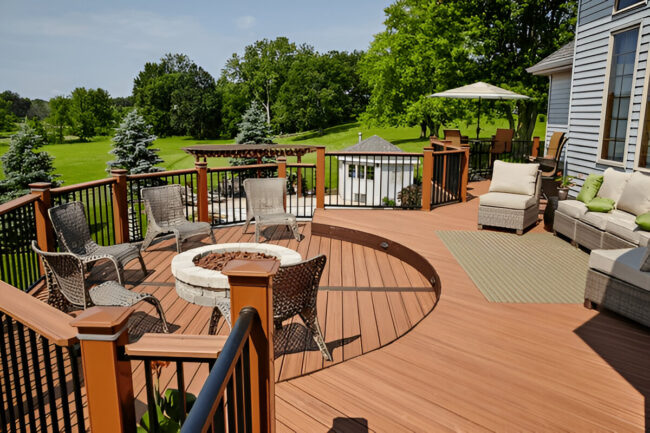
Some people like shopping for groceries, but the fact is, whatever you buy at the store is full of pesticides. Supposedly, all produce has “safe” levels of pesticides, but let’s be honest – it’s poison and no amount is safe. Having a kitchen garden without a big backyard is more than possible and there’s really no downside to it. You get fresh, healthy food, and you don’t need to go to the grocery store to pick it up.
Just imagine preparing pasta and being able to pick fresh basil or grabbing cherry tomatoes for a quick snack. If you plan it well, even a tiny little patio can have a thriving garden with herbs, vegetables, and edible flowers.
How do you make the most out of small space and what plants do well in pots?
Let’s find out!
Best Plants to Grow in a Kitchen Garden
If the garden space is limited (or even hardly existent), a deck or a patio will be a great spot to grow plants. If you don’t already have one, a custom deck builder can help you out there and build a deck that’s perfectly suited for a compact kitchen garden.
Here’s what to grow in it.
- Herbs
This is the number one choice for most people with kitchen gardens. Herbs don’t take up a lot of space, they grow quickly, and you can harvest them again and again. Basil, mint, rosemary, thyme, chives, and parsley are all excellent for container gardening. They love small pots and you can place them on railings, shelves, or hanging planters.
The best part? They add a lot of flavor to food.
- Leafy Greens and Vegetables for Salads
If you love fresh salads, you’ll love having your own leafy greens. Lettuce, spinach, arugula, and kale all grow fast and they’re fine with being in containers, so they’re ideal for small spaces. None of them need deep soil, so even shallow pots will do, but you can also put them in window boxes or fabric grow bags.
Leafy greens can be harvested over and over because you just snip off the outer leaves and the plants keep producing.
- Compact Vegetables
A lot of plants are bred specifically for small spaces, like cherry tomatoes, peppers, radishes, and carrots, so they’ll thrive in pots. Tomatoes and peppers like warm spots with lots of sun, so place them in a sunny corner. Radishes and carrots need deeper containers so their roots have space to grow, so keep that in mind.
When you’re picking out vegetables to plant, look for dwarf or bush varieties because they’ll stay small but still produce plenty of food.
- Edible Flowers
Nasturtiums, marigolds, and violets aren’t just beautiful; they have a purpose. Nasturtiums taste peppery and you can add them to salads. Marigolds and violets, on the other hand, are excellent for garnishing.
One other thing about these – they keep pests away and attract pollinators, so your garden looks amazing, it’s productive, and it’s good for the environment.
How to Care for Your Garden
Maintenance comes down to watering, good soil, keeping pests at bay, and protecting the plants from the weather.
The best time to water your garden is in the morning, so the plants have enough time to absorb moisture before heat strikes and the water starts evaporating. If that’s not an option for you, then water the garden in the evening, just don’t soak the leaves because that causes fungus. You can even get self-watering containers and drip irrigation systems to make watering easier.
The right soil is just as important as moisture. Get a high-quality potting mix to make sure your plants get moisture but without risking rot. Quality mixes allow for good drainage, so don’t cheap out on them.
Fertilization will keep the plants growing strong, and although chemical fertilizers do work, organic ones are much better. Compost and fish emulsion will make the soil healthier over time without any chemicals.
Now, pests can be really tricky, especially when you’re working with small spaces. Aphids, spider mites, and caterpillars are common issues, but there are natural ways of handling them. Companion planting and neem oil will keep them under control without harming insects that benefit your garden.
Don’t forget about the change in seasons! Too much heat will dry your garden out, so use cloth shades in the summer. In the winter, row covers will work great, and if you want your plants to have the most protection possible, think about getting a portable greenhouse.
Conclusion
Having a thriving garden on your deck, balcony, or a patio is entirely possible, and as you can see, it’s not even that hard to do. A little bit of watering here, some fertilization there, a cover of some sort during temperature extremes, and you’ll have a thriving, beautiful kitchen garden.
With minimal effort, you’ll get to enjoy food that’s tastier and healthier than anything you could ever buy in a grocery store.
